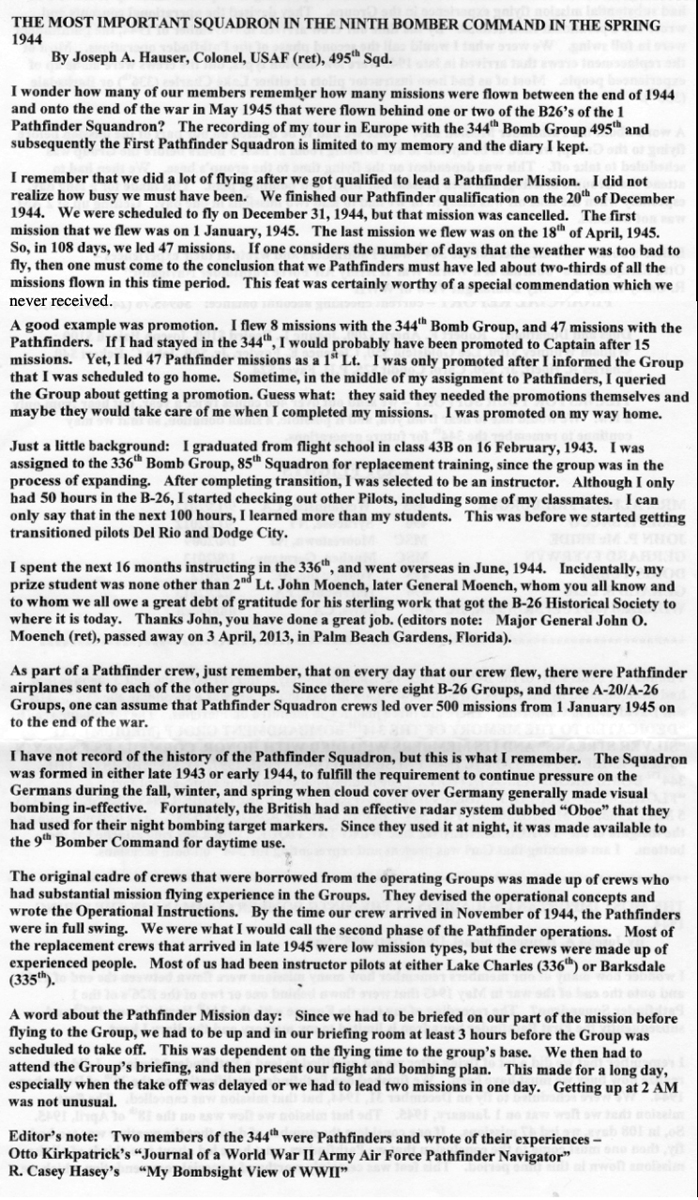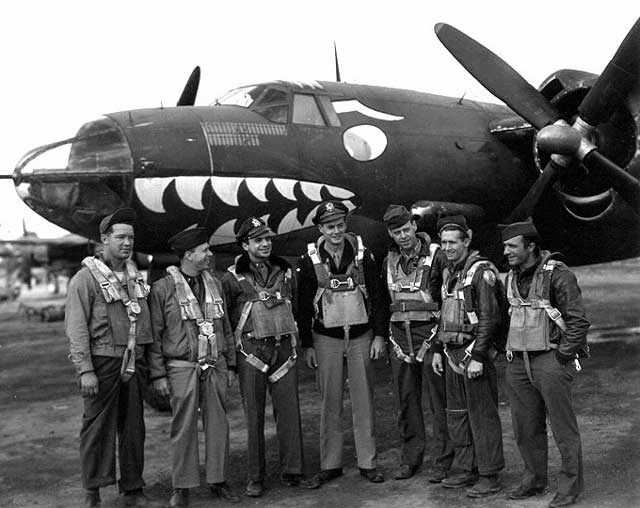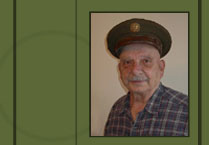1st Pathfinder Squadron (Provisional)
 By: Trevor Allen
By: Trevor Allen
Historian b26.com
– Chester Klier has asked me to try to answer your queries on the 1st Pathfinder Squadron (Provisional). Here goes:1. When were Pathfinder planes assigned? Only when the undercast was 10/ 10 (zero visibility)?Pathfinder planes were assigned in accordance with the current weather forecasts available. Usually these were in 10/10 cloud expected conditions.
2. Was there a Pathfinder in front of both Box 1 and Box 2?
If two Pathfinder ships were assigned for a mission then a Pathfinder B26 led each box.
3. When a Pathfinder was assigned, would Window ships fly in front of the Pathfinder? Why was window used only together with Pathfinders’? Which crews were assigned to these ships? Were these also from me 1st Pathfinder Squadron?
Window ships were not only used on Pathfinder missions. Their purpose was to blot out radar emissions from anti aircraft guns, so if a target was particularly heavily defended Window ships were assigned to the mission. Window ships were flown by crews from the participating group.
4. Why were there only three ships in the Box Lend Flight when the Pathfinder was assigned? Was the Pathfinder #1 in the Box Lead, or did it fly alone in front of the formation?
The Pathfinder was the box lead and the two ships with it were usually Window ships. Positioning of planes in the formation was decided by both the Pathfinder crew and the Group operations officer prior to the mission.
5. Do you know when the first B-26 night mission was flown and what was the target?
The first B26 night mission was flown by the 1st Pathfinder Squadron on the night of 1st June 1944 when three B26’s bombed gun positions at St Marie au Bois, France. This was purely a Pathfinder mission and no other unit participated.
6. During night missions, I understand that a Pathfinder led the mission and dropped flares for the following B-26s to aim at. Did the B-26s fly in formation or trailing each other? Did all planes during a night mission have a bomb sight?
During a night mission the Pathfinder marked the target with TI’s (target indicators) and continued to illuminate it while the following aircraft, flying in trail, bombed the target. Each B26 was equipped with a bomb sight and carrying both a navigator and bombardier.
7. How many planes were there in the 1st Pathfinder Squadron and what was the rank of the Squadron Commander?
On forming the TO called for a squadron strength of 14 aircraft. At the end of hostilities the squadron strength was 36 B26’s. The rank of the squadron commander was originally a Major and subsequently Lt. Colonel/Colonel.
8. Where in the B-26 was the Oboe/Gee Box Navigator’s Station.
The screens and ancillary equipment was situated in the navigators’ compartment. The receiver and transmitter in the aft bomb-bay.
9. Was the whole crew in a Pathfinder ship from the 1st Pathfinder Squadron?
The entire crew of a Pathfinder ship was squadron personnel.
10. How many planes were there in a squadron of a group and what was the rank of the Squadron Commander.
The rough strength of a standard B26 bomb squadron was 18 aircraft, over a period of time this varied considerably due to losses and replacement problems. At the end of hostilities most squadrons were over strength. The original TO called for a squadron strength of 14 B26’s. The rank of a squadron commander again varied due to operational conditions, but was usually either a Major or Lt Colonel.
Crew from the 1st Pathfinder Squadron

Dawson U. Kershaw, second from right. He was a tailgunner on a B26 Marauder, 391st Bomb group out of Matching Green, England. – Betsy Kershaw


